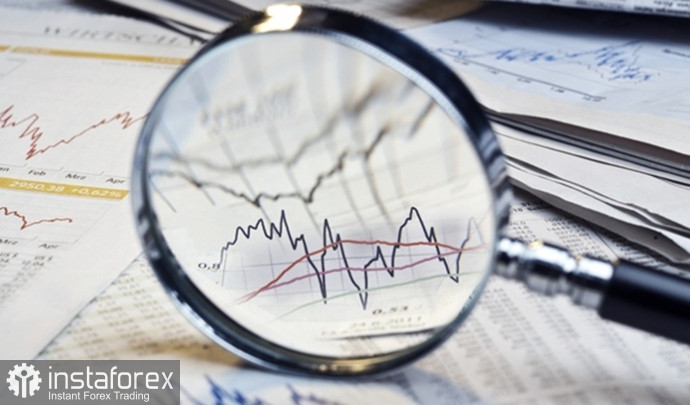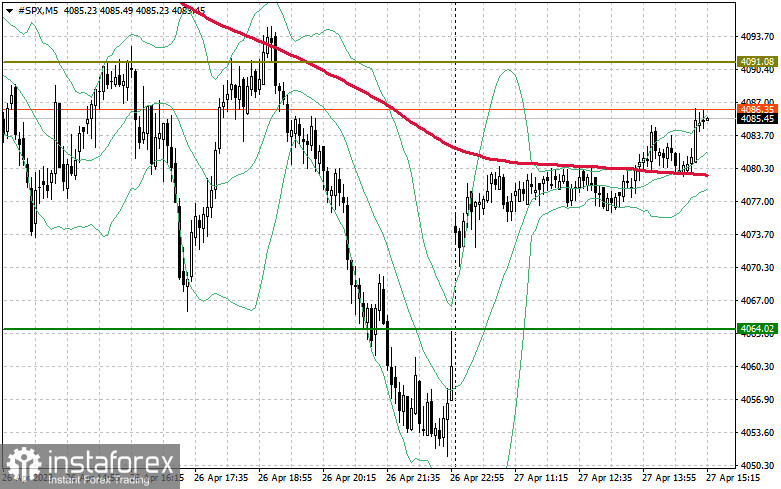US stock index futures grew ahead of the important report on the US GDP growth for the first quarter of this year. Traders also took advantage of good earnings reports posted by US corporations. Futures contracts on the S&P 500 increased after a two-day decline in the base index, while futures contracts on the high-tech Nasdaq 100 also saw significant gains.

As was mentioned earlier, Meta Platforms Inc.'s earnings exceeded analysts' estimates, resulting in an 11% increase in its shares during premarket trading. Several US companies reported good corporate revenues that exceeded expectations. Amazon.com Inc., Caterpillar Inc., Merck & Co., and Intel Corp. are next in line.
Treasury bonds remain stable ahead of US GDP data and initial jobless claims, which will help assess the strength of the US economy. The Federal Reserve's preferred inflation indicator, the core PCE data, will be published tomorrow.
Potential tightening of lending conditions related to banking turmoil is the main headache for the Fed right now, not to mention inflationary pressure. The situation in the banking sector may prompt the Fed to adjust the pace of interest rate hikes, as problems with First Republic Bank are still unresolved, and the regional US lender faces potential borrowing constraints from the Fed.
Some experts believe that in the current situation, the FOMC may refrain from raising rates in May, postponing this decision until June, although this is unlikely.
The Stoxx 600 index rebounded after recovering from earlier losses, driven by the growth of pharmaceutical manufacturers and banks after optimistic results from Sanofi, AstraZeneca Plc, and Barclays Plc.

Oil continues to decline, gold is trading close to the highest level in a week, and Bitcoin has resumed growth.
As for the technical outlook for the S&P 500, demand for risk assets remains quite sluggish, and further index growth will be possible only after the US GDP data is out. Bulls will have to break above $4,090 and settle at $4,116 to pave the way to higher targets at $4,150 and $4,208. Another priority for the bulls will be to control the level of $4,229, which will strengthen the new bull market. In case of downward movement amid increasing risks of further interest rate hikes and a subsequent recession, buyers must assert themselves around $4,064. A breakout of this range will quickly push the trading instrument to $4,038 and $4,010.
 English
English 
 Русский
Русский Bahasa Indonesia
Bahasa Indonesia Bahasa Malay
Bahasa Malay ไทย
ไทย Español
Español Deutsch
Deutsch Български
Български Français
Français Tiếng Việt
Tiếng Việt 中文
中文 বাংলা
বাংলা हिन्दी
हिन्दी Čeština
Čeština Українська
Українська Română
Română

